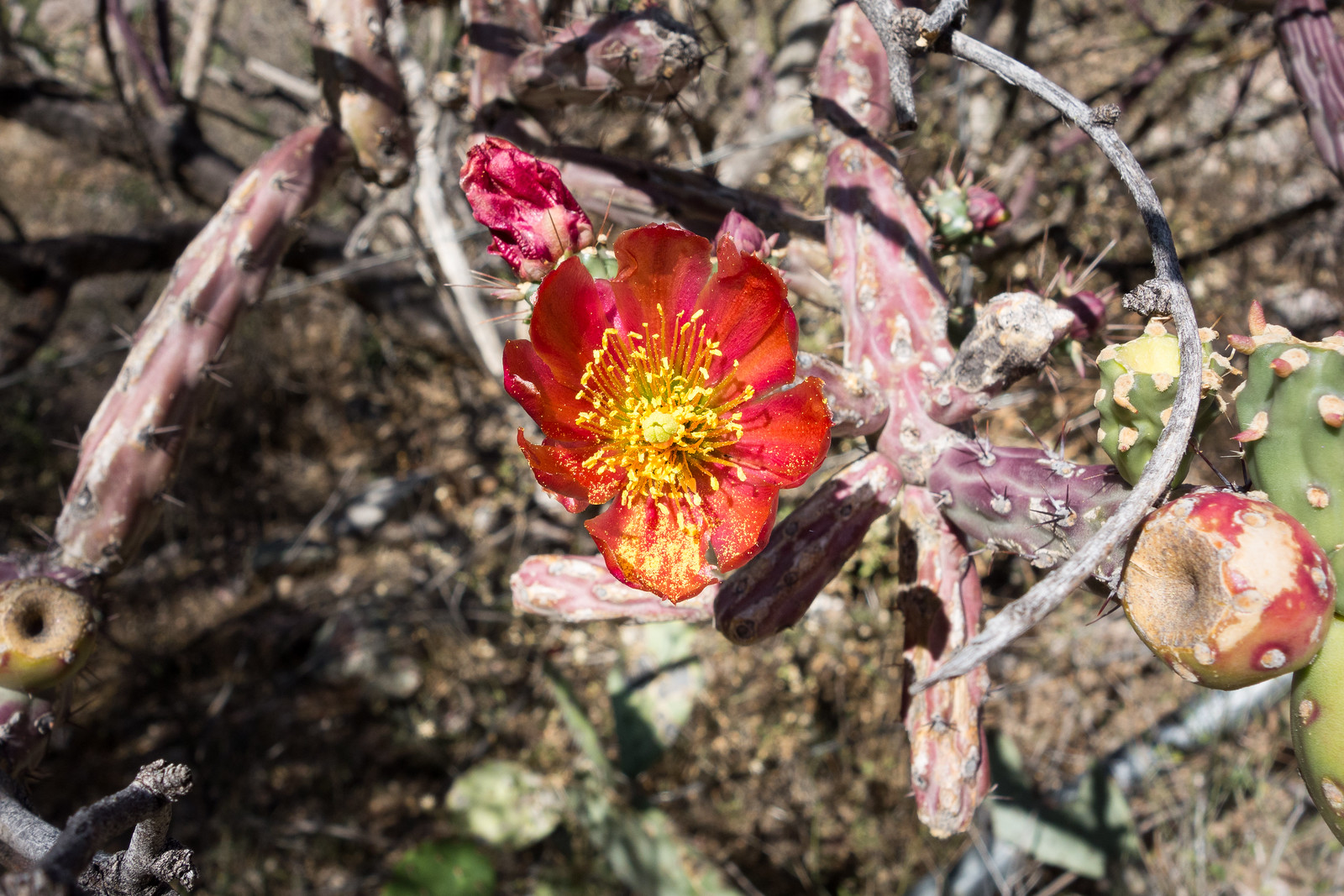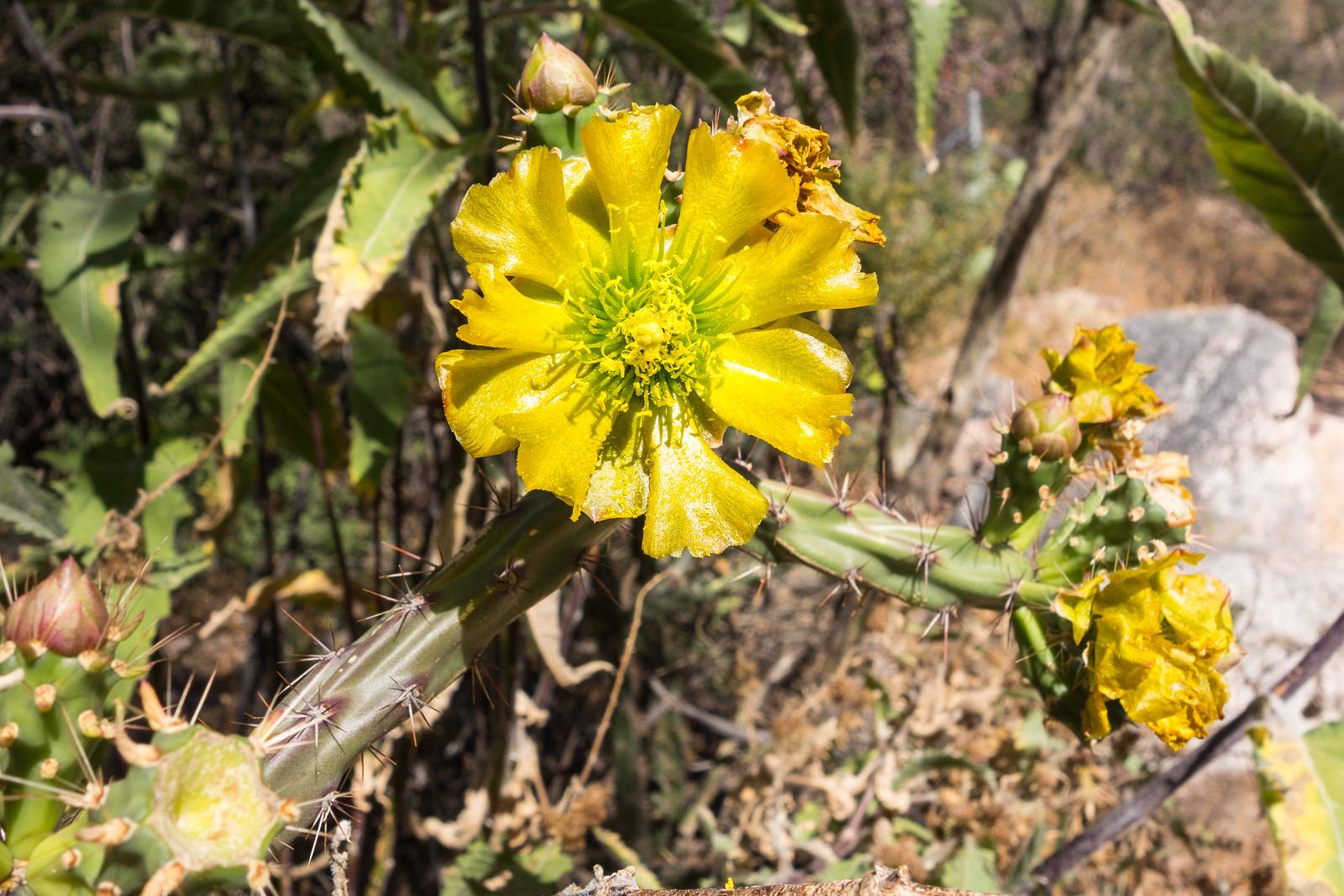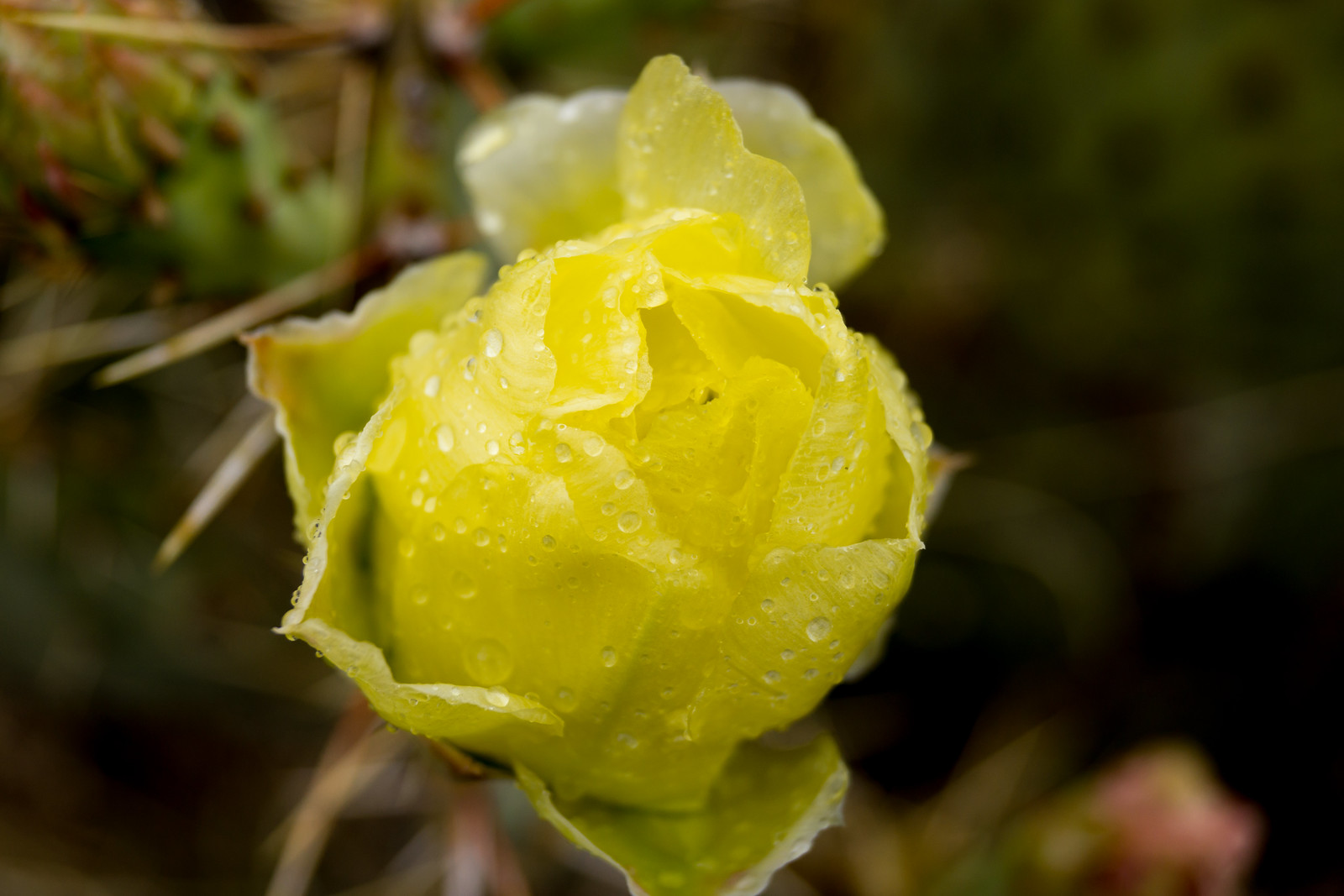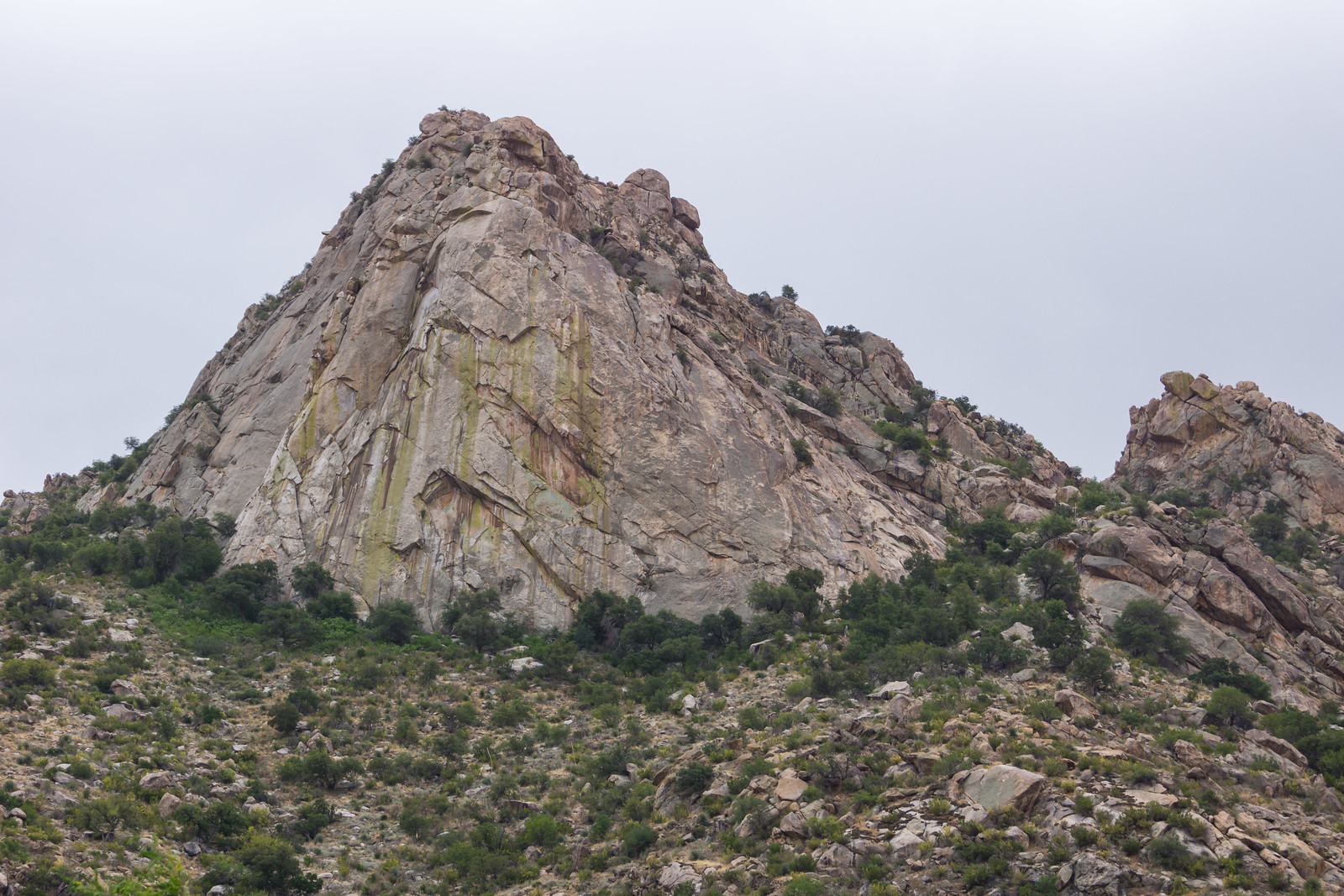

The pictures above are from Catalina State Park but Doug Kreutz’s recent article Saguaros on a blooming binge in Sabino Canyon still seems relevant – and on the subject of Saguaros perhaps some photographic inspiration from Jack Dykinga…

I was recently reminded of John V. Bezy’s A Guide to the Geology of Catalina State Park and the Western Santa Catalina Mountains (available as a free PDF file) – the guide is accessible to readers without any formal training in geology and has been interesting to read again because it contains information on so many familiar sights. From a section titled Granite Pinnacles (p.15):
Catalina State Park is best known for the dramatic granite pinnacles that have developed in the upper, cliff-forming unit of the Wilderness Suite granite in this part of the Santa Catalina Mountains. These towering spires are the products of surface weathering and erosion by running water guided by deep joints in the rock.
The Wilderness Suite granite differs from the Oracle and Catalina granites that make up the western face of the range in that it is dominated by widely spaced, vertical joints. These fractures serve as avenues along which chemical and physical weathering and erosion penetrate the granite. Rock shattering, caused by ice expansion, wedging by plant roots, and chemical decomposition, enlarges the joints. Water from rain and snowmelt is channeled into the joints, cutting them into ravines and canyons. Joints actually control the location of most streams crossing bedrock. This concentrated action of weathering and erosion eventually widens and deepens the ravines and canyons, leaving the massive granite in between standing as towering pinnacles.

A Guide to the Geology of Catalina State Park and the Western Santa Catalina Mountains – p.10:
The bedrock of this part of the Santa Catalina Mountains is mainly the Oracle, Catalina, and Wilderness Suite granites. These granites were injected deep within the Earth’s crust as great molten masses. They were emplaced at different times: the Oracle Granite 1.45 billion years ago, and the Wilderness Suite Granite 45-50 million years ago, and the Catalina Granite 26 million years ago. The molten rock, which cooled and solidified over millions of years and miles below the Earth’s surface, has since been exposed by erosion.







